Abstract
Based on short recordings, the rectum has been shown to have contractions with a frequency of five to 10 cycles per minute and slow contractions at three cycles per minute. To define anorectal motility over a prolonged period of time, we have studied 12 healthy volunteers using a fine pressure sensitive anorectal probe. A total of 240 hours of recording was obtained. We observed three types of activity in the rectum: (i) runs of powerful phasic contractions with a frequency of two to three per minute, lasting for three to 10 minutes, and recurring to an interval of 92 (1.9) minutes (mean (SEM)) during the day and 56 (1.7) minutes (mean (SEM)) at night, (ii) isolated prolonged contractions lasting for 10-20 seconds and seen mainly during waking, and (iii) clusters of contractions occurring at a frequency of five to six per minute lasting for one to two minutes and seen predominantly during the postprandial period. These clusters of contractions resembled the discrete clustered contractions seen in the ileum, whereas the more powerful and prolonged runs of contractions resembled phase III activity in the small intestine. In contrast, the anal canal showed bursts of contractions which were not temporally related. Our data show that the rectum, like the upper gastrointestinal tract, exhibits periodic motor activity; it remains to be seen whether these two biorhythms are synchronous.
Full text
PDF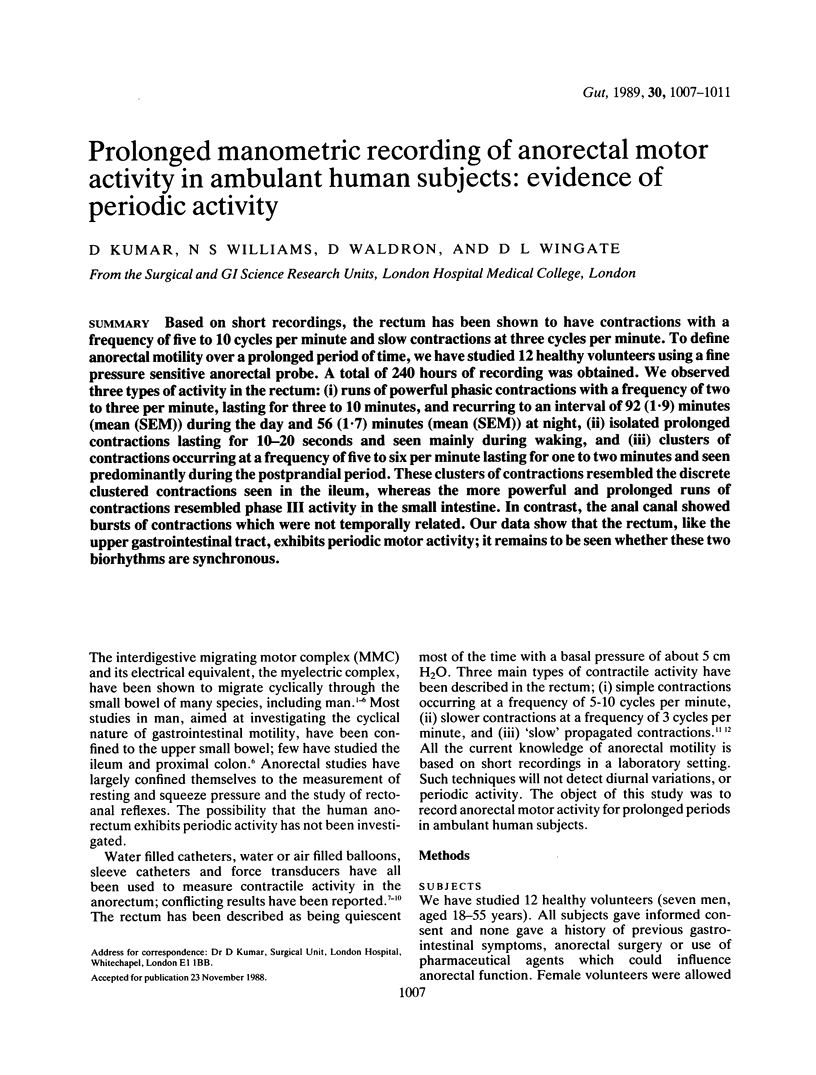
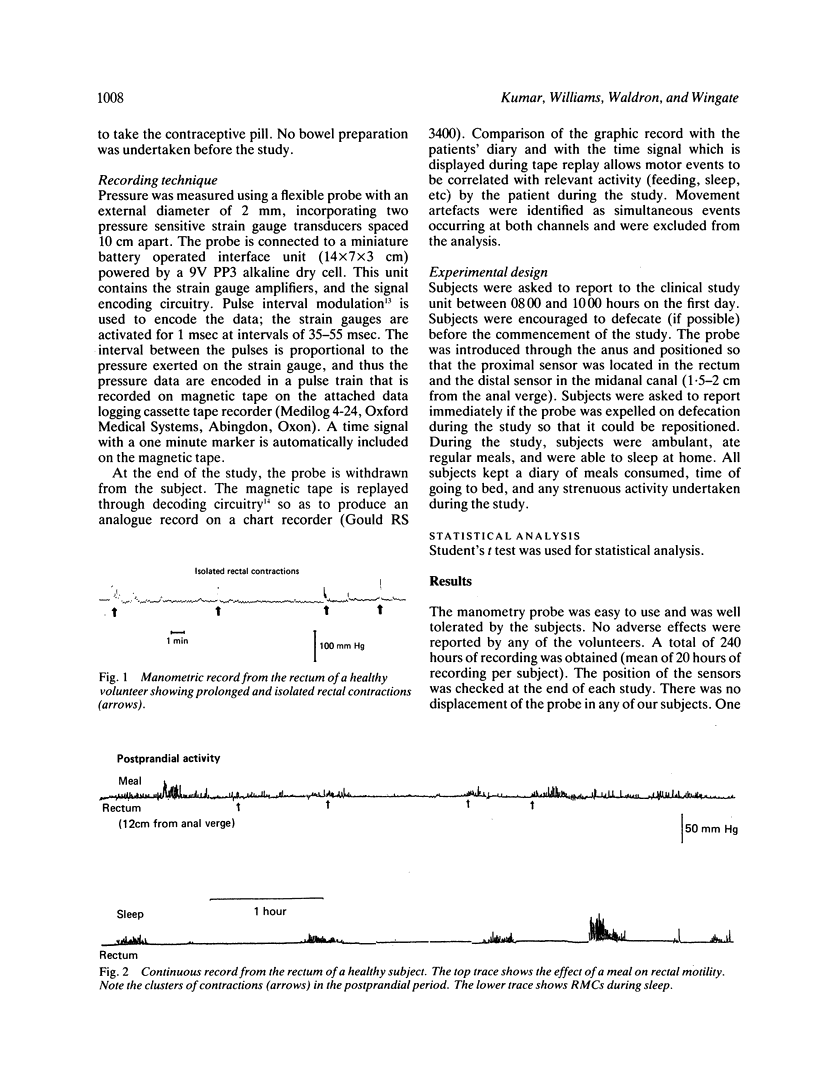
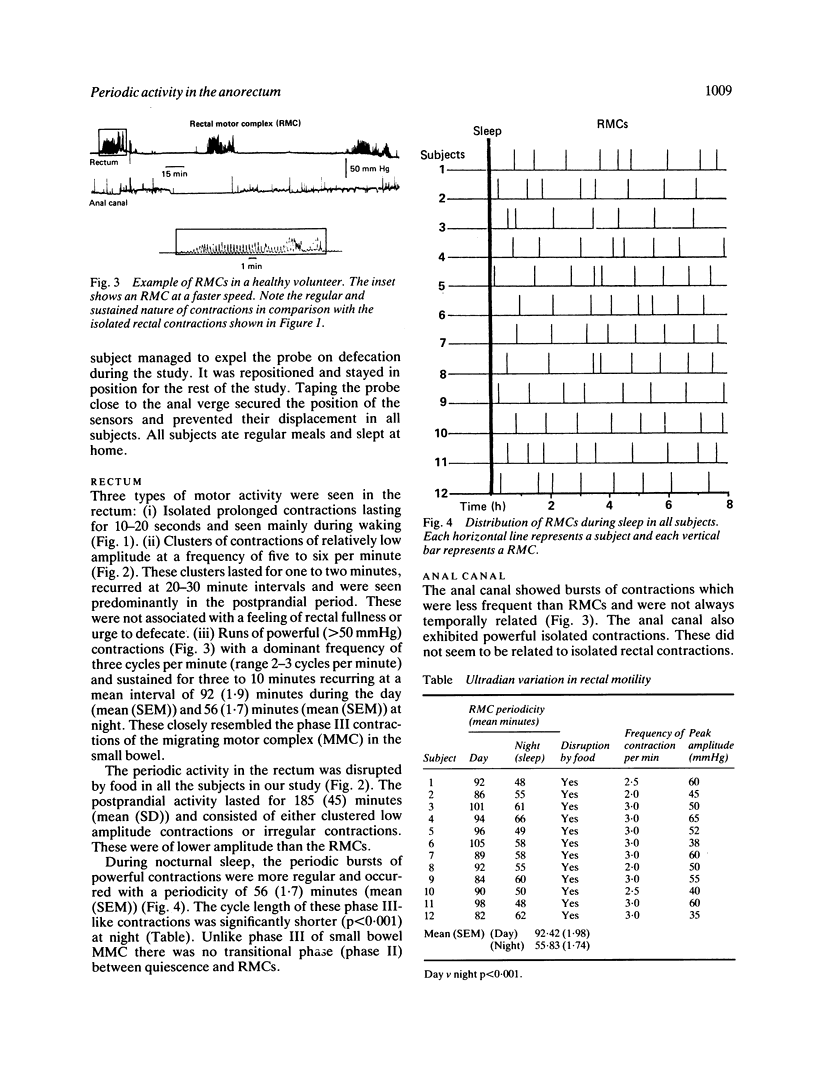
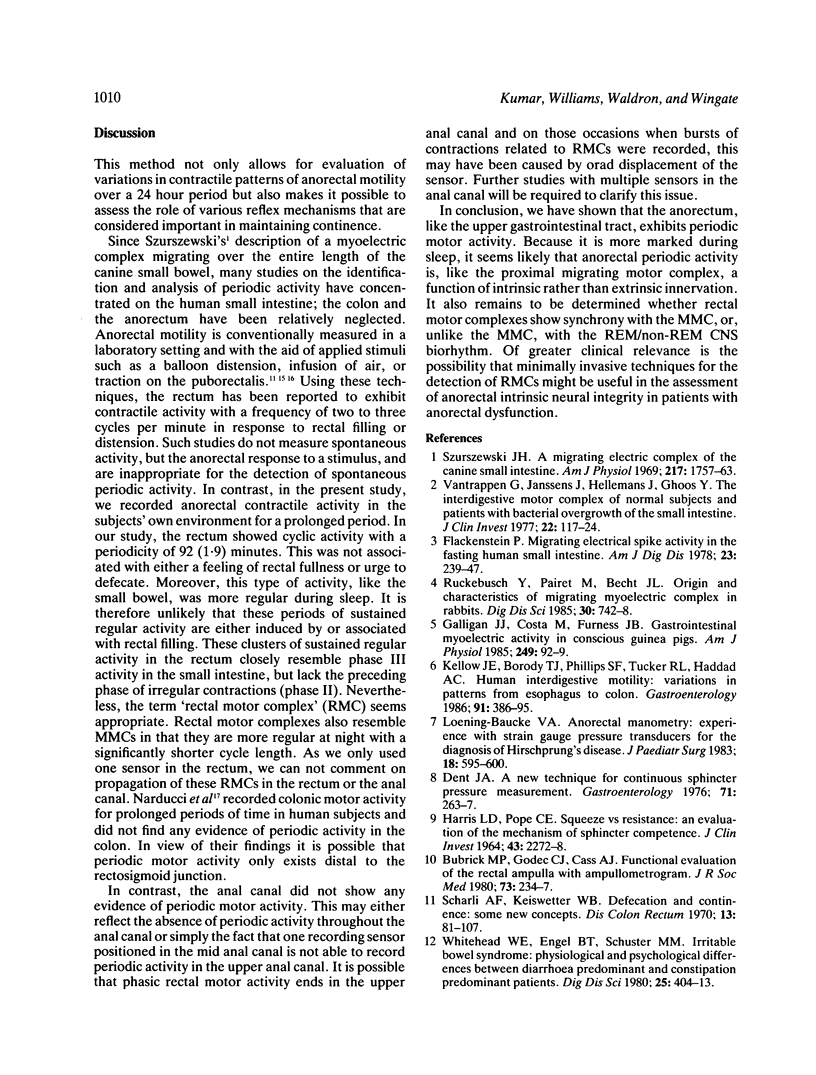
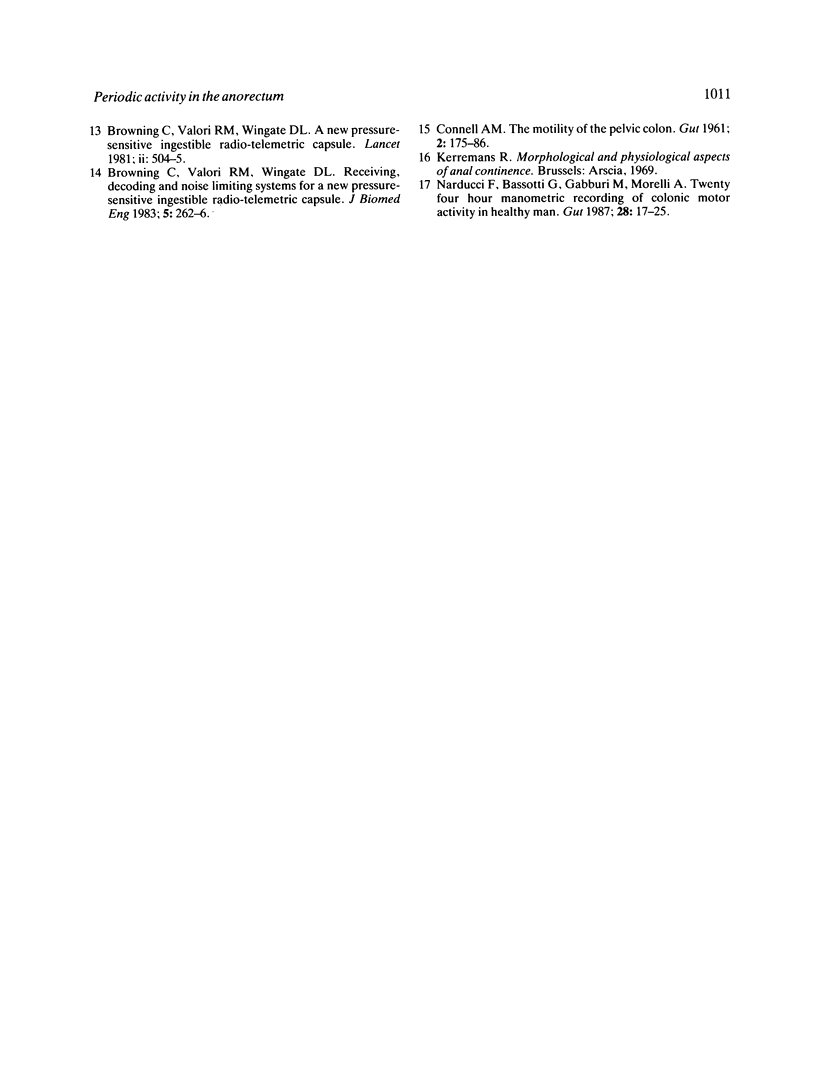
Selected References
These references are in PubMed. This may not be the complete list of references from this article.
- Browning C., Valori R. M., Wingate D. L. Receiving, decoding and noise limiting systems for a new pressure-sensitive ingestible radio telemetric capsule. J Biomed Eng. 1983 Jul;5(3):262–266. doi: 10.1016/0141-5425(83)90108-5. [DOI] [PubMed] [Google Scholar]
- Browning C., Valori R., Wingate D. L., MacLachlan D. A new pressure-sensitive ingestible radio-telemetric capsule. Lancet. 1981 Sep 5;2(8245):504–505. doi: 10.1016/s0140-6736(81)90886-2. [DOI] [PubMed] [Google Scholar]
- Bubrick M. P., Godec C. J., Cass A. S. Functional evaluation of the rectal ampulla with ampullometrogram. J R Soc Med. 1980 Apr;73(4):234–237. doi: 10.1177/014107688007300404. [DOI] [PMC free article] [PubMed] [Google Scholar]
- CONNELL A. M. The motility of the pelvic colon. 1. Motility in normals and in patients with asymptomatic duodenal ulcer. Gut. 1961 Jun;2:175–186. doi: 10.1136/gut.2.2.175. [DOI] [PMC free article] [PubMed] [Google Scholar]
- Dent J. A new technique for continuous sphincter pressure measurement. Gastroenterology. 1976 Aug;71(2):263–267. [PubMed] [Google Scholar]
- HARRIS L. D., POPE C. E., 2nd "SQUEEZE" VS. RESISTANCE: AN EVALUATION OF THE MECHANISM OF SPHINCTER COMPETENCE. J Clin Invest. 1964 Dec;43:2272–2278. doi: 10.1172/JCI105101. [DOI] [PMC free article] [PubMed] [Google Scholar]
- Itoh Z., Honda R., Aizawa I., Takeuchi S., Hiwatashi K., Couch E. F. Interdigestive motor activity of the lower esophageal sphincter in the conscious dog. Am J Dig Dis. 1978 Mar;23(3):239–247. doi: 10.1007/BF01072324. [DOI] [PubMed] [Google Scholar]
- Kellow J. E., Borody T. J., Phillips S. F., Tucker R. L., Haddad A. C. Human interdigestive motility: variations in patterns from esophagus to colon. Gastroenterology. 1986 Aug;91(2):386–395. doi: 10.1016/0016-5085(86)90573-1. [DOI] [PubMed] [Google Scholar]
- Loening-Baucke V. A. Anorectal manometry: experience with strain gauge pressure transducers for the diagnosis of Hirschsprung's disease. J Pediatr Surg. 1983 Oct;18(5):595–600. doi: 10.1016/s0022-3468(83)80368-6. [DOI] [PubMed] [Google Scholar]
- Narducci F., Bassotti G., Gaburri M., Morelli A. Twenty four hour manometric recording of colonic motor activity in healthy man. Gut. 1987 Jan;28(1):17–25. doi: 10.1136/gut.28.1.17. [DOI] [PMC free article] [PubMed] [Google Scholar]
- Ruckebusch Y., Pairet M., Becht J. L. Origin and characterization of migrating myoelectric complex in rabbits. Dig Dis Sci. 1985 Aug;30(8):742–748. doi: 10.1007/BF01320488. [DOI] [PubMed] [Google Scholar]
- Scharli A. F., Kiesewetter W. B. Defecation and continence: some new concepts. Dis Colon Rectum. 1970 Mar-Apr;13(2):81–107. doi: 10.1007/BF02617635. [DOI] [PubMed] [Google Scholar]
- Szurszewski J. H. A migrating electric complex of canine small intestine. Am J Physiol. 1969 Dec;217(6):1757–1763. doi: 10.1152/ajplegacy.1969.217.6.1757. [DOI] [PubMed] [Google Scholar]
- Whitehead W. E., Engel B. T., Schuster M. M. Irritable bowel syndrome: physiological and psychological differences between diarrhea-predominant and constipation-predominant patients. Dig Dis Sci. 1980 Jun;25(6):404–413. doi: 10.1007/BF01395503. [DOI] [PubMed] [Google Scholar]


